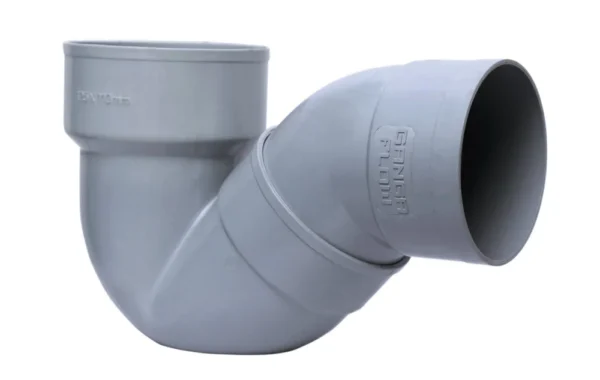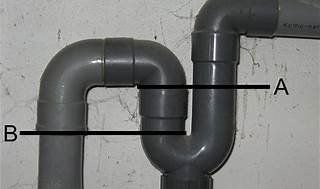Plumbing traps are an important part of any plumbing system, designed to prevent sewer gases from entering buildings while allowing waste to pass through. Here, we’ll explore the various types of plumbing traps, their uses, and their unique features.
- P-Trap
The P-trap is the most common type of plumbing trap found in residential and commercial properties. Shaped like the letter “P,” this trap is typically installed under sinks, bathtubs, and showers.
P Trap used in Plumbing It retains water to create a seal that prevents sewer gases from entering your home. P-traps are known for their reliability and ease of maintenance.
- S-Trap
Similar to the P-trap, the S-trap is shaped like the letter “S” and serves the same purpose of preventing sewer gases from entering your home. However, S-traps are primarily used in floor-mounted fixtures, such as toilets and bidets. They are less common today due to potential siphonage issues. - Bottle Trap
The bottle trap is a unique type of trap typically used in bathroom sinks and basins with exposed pipework. It resembles the shape of a bottle and is an excellent choice for modern bathrooms where aesthetics are a priority. The sleek design makes it ideal for small spaces. - Drum Trap
Drum traps are barrel-shaped and were once popular in older homes. They are typically found in bathtubs, showers, and sometimes sinks. Drum traps can be challenging to maintain, and their usage has decreased over time due to the availability of more efficient alternatives. - Floor Trap (Nahni Trap)
Floor traps, also known as Nahni traps, are installed in the floor to collect wastewater from sinks, washbasins, and other fixtures. They are essential in preventing foul odors from escaping into living spaces. - Gully Trap
Gully traps are constructed outside the building to collect wastewater from kitchens, bathrooms, and other fixtures. They are crucial in preventing sewer gases from entering the building through external drains. - Intercepting Trap
Intercepting traps are installed at the junction of the house drain and the public sewer. They are designed to prevent the entry of sewer gases from the public sewer into the house drain. - Grease Trap
Grease traps are specifically designed for commercial kitchens and restaurants to prevent fats, oils, and grease (FOG) from entering the sewer system. They are essential in maintaining the efficiency of the plumbing system in commercial settings. - HepvO Trap
The HepvO trap is a relatively new plumbing trap that uses a self-sealing valve instead of water to prevent sewer gases from entering your home. This trap is ideal for areas where the water seal in traditional traps may be prone to evaporation, such as RVs and boats.
Read Also- Essential Plumbing Tools – Handy Guide
Necessity of the Plumbing Traps
A plumbing trap serves three important functions in a plumbing system:
- Prevent Sewer Gases: It creates a water seal that prevents unpleasant and potentially harmful sewer gases from entering living spaces.
- Catch Debris: It traps debris to avoid clogging the main drainage pipes, making maintenance easier.
- Maintain Hygiene: It helps maintain hygiene by ensuring that waste and wastewater are properly directed away from living areas.
These traps are essential components for modern plumbing systems and contribute significantly to overall comfort and safety.
Conclusion:
Knowledge of different types of plumbing traps and their uses is essential for designing and maintaining a functional and efficient plumbing system. Whether you’re a homeowner or a professional plumber, knowing which trap to use in various situations can help prevent common plumbing issues and ensure a safe and hygienic environment.
Also Read-
Purposes and Types of Skirting in Building Construction
Types and Purpose of Flooring – Building Construction
Scope of Water Resource Engineering in USA
Building Construction Book by IGNOU (PDF)
Building Materials Book pdf by IGNOU (pdf)
External Resources-
